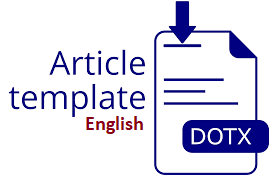Deteksi Nominal Mata Uang Rupiah Menggunakan Metode Convolutional Neural Network dan Feedforward Neural Network
DOI:
https://doi.org/10.30865/klik.v4i4.1711Keywords:
Convolutional Neural Network; Computer Vision; Currency; Detection; RupiahAbstract
This research aims to develop a nominal detection system for the Rupiah currency for the 2022 emission year using the Convolutional Neural Network (CNN) and Feedforward Neural Network (FNN) methods, especially in the context of applications for vending machines. This research explores the potential of computer vision technology to facilitate the introduction of Rupiah banknotes and contribute to the development of vending machines. The dataset used includes variations in lighting conditions, orientation, and position of banknotes, thus involving various augmentation and preprocessing processes. The model evaluation results include nominal detection accuracy in various conditions, considering the success of the system to support the performance of the vending machine. This research is expected to contribute to the development of more comprehensive technology and expand the application of CNN and FNN in the context of currency detection. In this research, the CNN method produced the best accuracy of 100% for testing in bright conditions, then in sufficient light conditions it produced an accuracy of 96.43%. Meanwhile, testing in dark conditions got quite low results, only 78.56%. Then the FNN method produces the same accuracy of 53.57% in bright light, sufficient light and low light conditions.
Downloads
References
I. Putri, F. Ajiani, B. Dinda, P. Ayu, A. Rahmatyar, and W. D. Isasih, “Edukasi Mata Uang Baru Emisi 2022 dan Menghindari Mata Uang Palsu,” JILPI J. Ilm. Pengabdi. dan Inov., vol. 1, no. 4, pp. 865–874, 2023.
N. Ratnasri and T. Sharmilan, “Vending Machine Technologies: A Review Article,” Int. J. Sci. Basic Appl. Res., vol. 58, pp. 1–7, 2021.
A. P. Pujiputra, H. Kusuma, and T. A. Sardjono, “Ultraviolet Rupiah Currency Image Recognition using Gabor Wavelet,” Int. Semin. Intell. Technol. Its Appl., pp. 299–303, 2018, doi: 10.1109/ISITIA.2018.8711296.
M. M. Ibrahim, R. Rahmadewi, L. Nurpulaela, F. Teknik, and U. S. Karawang, “PENDETEKSIAN NOMINAL UANG PADA GAMBAR MENGGUNAKAN CONVOLUTIONAL NEURAL NETWORK?: INTEGRASI METODE PRA- PEMROSESAN CITRA DAN KLASIFIKASI BERBASIS CNN,” vol. 7, no. 2, pp. 1395–1400, 2023.
O. Ery Pamungkas et al., “Classification of Rupiah to Help Blind with The Convolutional Neural,” J. RESTI (Rekayasa Sist. dan Teknol. Informasi), vol. 5, no. 158, pp. 259–268, 2022.
A. R. Pratama, M. Mustajib, and A. Nugroho, “Deteksi Citra Uang Kertas dengan Fitur RGB Menggunakan K-Nearest Neighbor,” J. Eksplora Inform., vol. 9, no. 2, pp. 163–172, 2020, doi: 10.30864/eksplora.v9i2.336.
L. Kurniawati, K. Sumantri, Risandriya, and H. Wijanarko, “Pendeteksi Nominal Uang Kertas,” J. Appl. Electr. Eng. , vol. 3, no. December, pp. 2–6, 2019.
I. Handayani, I. J. Dewanto, and D. Andriani, “Pemanfaatan RinfoForm Sebagai Media Pengumpulan Data Kinerja Dosen,” Technomedia J., vol. 2, no. 2, pp. 14–28, 2018, doi: 10.33050/tmj.v2i2.321.
H. Alamsyah, Y. Cahyana, and A. R. Pratama, “Deteksi Fake Review Menggunakan Metode Support Vector Machine dan Naïve Bayes Di Tokopedia,” 2023.
R. Randel and R. Cornet, Informatics for Health: Connected Citizen-Led Wellness and Population Health. Amsterdam: IOS Press, 2017.
P. A. Nugroho, I. Fenriana, and R. Arijanto, “Implementasi Deep Learning Menggunakan Convolutional Neural Network ( Cnn ) Pada Ekspresi Manusia,” Algor, vol. 2, no. 1, pp. 12–21, 2020.
S. Ilahiyah and A. Nilogiri, “Implementasi Deep Learning Pada Identifikasi Jenis Tumbuhan Berdasarkan Citra Daun Menggunakan Convolutional Neural Network,” JUSTINDO (Jurnal Sist. dan Teknol. Inf. Indones., vol. 3, no. 2, pp. 49–56, 2018.
R. Venkatesan and B. Li, Convolutional Neural Networks in Visual Computing. Boca Raton: CRC Press, 2017.
M. R. Alwanda, R. P. K. Ramadhan, and D. Alamsyah, “Implementasi Metode Convolutional Neural Network Menggunakan Arsitektur LeNet-5 untuk Pengenalan Doodle,” J. Algoritm., vol. 1, no. 1, pp. 45–56, 2020, doi: 10.35957/algoritme.v1i1.434.
F. F. Maulana and N. Rochmawati, “Klasifikasi Citra Buah Menggunakan Convolutional Neural Network,” J. Informatics Comput. Sci., vol. 1, no. 02, pp. 104–108, 2020, doi: 10.26740/jinacs.v1n02.p104-108.
J. Gu et al., “Recent advances in convolutional neural networks,” Pattern Recognit., vol. 77, pp. 354–377, 2018, doi: 10.1016/j.patcog.2017.10.013.
G. Arminger and D. Enache, “Statistical Models and Artificial Neural Networks,” Wuppertal, vol. 1, pp. 1–13, 1996.
Suhartono, “Feedforward Neural Networks untuk pemodelan runtun waktu,” Univ. Gadjah Mada, 2007.
G. P. Zhang and M. Qi, “Neural network forecasting for seasonal and trend time series,” Eur. J. Oper. Res., vol. 160, no. 2, pp. 501–514, 2005, doi: 10.1016/j.ejor.2003.08.037.
R. Yati, T. Rohana, and A. R. Pratama, “Klasifikasi Jenis Mangga Menggunakan Algoritma Convolutional Neural Network,” vol. 7, pp. 1265–1275, 2023, doi: 10.30865/mib.v7i3.6445.
D. Yin, J. Shlens, and J. Gilmer, “A Fourier Perspective on Model Robustness in Computer Vision,” no. NeurIPS, 2019.
Z. Hussain, F. Gimenez, D. Yi, and D. Rubin, “Differential Data Augmentation Techniques for Medical Imaging Classification Tasks,” pp. 979–984, 2018.
L. Huang, W. Pan, Y. O. U. Zhang, Y. Wu, and S. Member, “Data Augmentation for Deep Learning-Based Radio Modulation Classification,” IEEE Access, vol. 8, pp. 1498–1506, 2020, doi: 10.1109/ACCESS.2019.2960775.
J. Sanjaya and M. Ayub, “Augmentasi Data Pengenalan Citra Mobil Menggunakan Pendekatan Random Crop , Rotate , dan Mixup,” vol. 6, pp. 311–323, 2020.
Bila bermanfaat silahkan share artikel ini
Berikan Komentar Anda terhadap artikel Deteksi Nominal Mata Uang Rupiah Menggunakan Metode Convolutional Neural Network dan Feedforward Neural Network
ARTICLE HISTORY
Issue
Section
Copyright (c) 2024 Dede Aprillia, Tatang Rohana, Tohirin Al Mudzakir, Deden Wahiddin

This work is licensed under a Creative Commons Attribution 4.0 International License.
Authors who publish with this journal agree to the following terms:
- Authors retain copyright and grant the journal right of first publication with the work simultaneously licensed under Creative Commons Attribution 4.0 International License that allows others to share the work with an acknowledgment of the work's authorship and initial publication in this journal.
- Authors are able to enter into separate, additional contractual arrangements for the non-exclusive distribution of the journal's published version of the work (e.g., post it to an institutional repository or publish it in a book), with an acknowledgment of its initial publication in this journal.
- Authors are permitted and encouraged to post their work online (e.g., in institutional repositories or on their website) prior to and during the submission process, as it can lead to productive exchanges, as well as earlier and greater citation of published work (Refer to The Effect of Open Access).
















